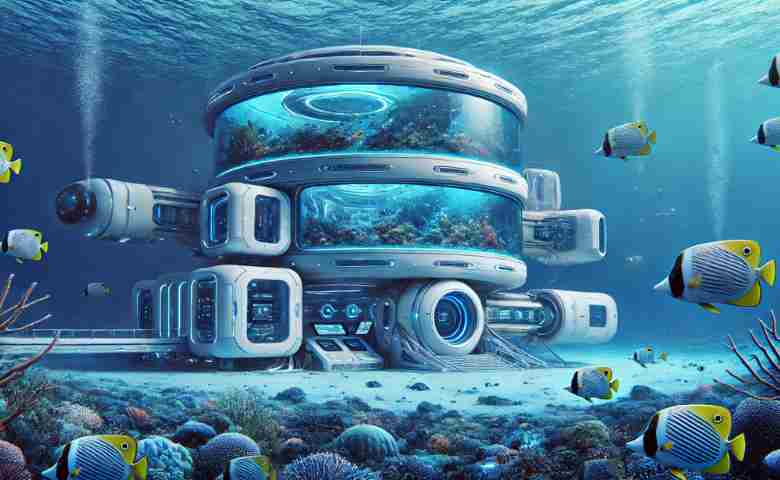Last Updated on October 22, 2024 by Admin
The mysteries of the deep ocean have captivated human curiosity for centuries. Despite significant advancements in technology and marine exploration, only a fraction of the ocean has been thoroughly explored.
This is where the role of advanced engineering in developing permanent underwater research stations becomes crucial.
These cutting-edge facilities enable researchers to live and work beneath the sea for extended periods, allowing for unprecedented scientific discoveries and a better understanding of the marine environment.
The Need for Permanent Underwater Research Stations
The ocean covers more than 70% of our planet, yet it remains one of the least explored frontiers. Traditional oceanographic research often involves short-term expeditions on surface vessels or temporary underwater habitats.
These methods, while valuable, limit the scope and depth of scientific study. By contrast, permanent underwater research stations provide a stable and safe environment for continuous observation and experimentation.
Such stations support a wide range of studies, including marine biology, geology, and climatology.
They allow scientists to monitor changes in the underwater ecosystem, study the behaviour of marine life in its natural habitat, and understand the impact of human activities on ocean health.
Permanent installations also serve as testbeds for innovative technologies that can be applied to other sectors, such as renewable energy or space exploration.
Advanced Engineering Solutions
Building and maintaining permanent underwater research stations require a range of advanced engineering solutions. These structures must withstand extreme pressures, corrosive saltwater, and the constant movement of ocean currents.
The engineering challenges are multifaceted, encompassing everything from the design and materials used in the construction to the power supply and life support systems.
1. Structural Design and Materials: The station’s structural integrity is paramount. Engineers must select materials that can endure high pressure and corrosion while maintaining safety and durability.
Advanced composites, titanium alloys, and reinforced concrete are often used in construction. The station’s shape and layout also need to minimise resistance to currents and provide maximum stability on the seabed.
2. Life Support Systems: Life support systems are critical for creating a liveable environment inside the station. These systems regulate air pressure, provide fresh oxygen, and manage carbon dioxide levels.
Engineers develop complex filtration and recirculation systems to ensure a stable and safe atmosphere for inhabitants.
3. Energy Supply: Powering an underwater station is another significant challenge. Engineers are exploring various energy sources, including solar power, underwater turbines, and even the use of bioenergy derived from marine organisms.
The goal is to create a sustainable and reliable power supply that minimises environmental impact.
4. Communication and Data Transmission: Communication between the underwater station and the surface is essential for operational safety and scientific collaboration.
Engineers have developed innovative solutions such as underwater fibre-optic cables and acoustic communication systems to ensure reliable data transmission and real-time interaction with surface teams.
Current Projects and Future Prospects
Several organisations are at the forefront of developing these permanent underwater research stations. One notable example is DEEP, a company dedicated to advancing the capabilities of humans to explore, understand, and protect our oceans.
Their pioneering work includes designing habitats that can support scientific teams for months at a time, equipped with state-of-the-art research facilities and comfortable living quarters.
Looking to the future, permanent underwater research stations could evolve to support not just scientific research but also serve as hubs for ocean conservation efforts, underwater tourism, and even as prototypes for future space habitats.
With continued advancements in engineering and technology, these stations may become an integral part of humanity’s efforts to explore and protect the oceans.
Conclusion
The development of permanent underwater research stations represents a significant leap forward in ocean exploration.
Advanced engineering plays a critical role in overcoming the challenges posed by the harsh underwater environment, making it possible to establish safe, sustainable, and functional research facilities beneath the sea.
As these technologies continue to evolve, they will unlock new opportunities for scientific discovery and contribute to the preservation of our planet’s most mysterious and vital ecosystem.
Related Posts:
- Advanced Materials in Construction: Durability and Design with StruXure Pergolas
- Total Station in Surveying: Types, Uses and Applications
- Why Permanent Lighting is Worth the Investment
- How to protect your roof from water damage?


